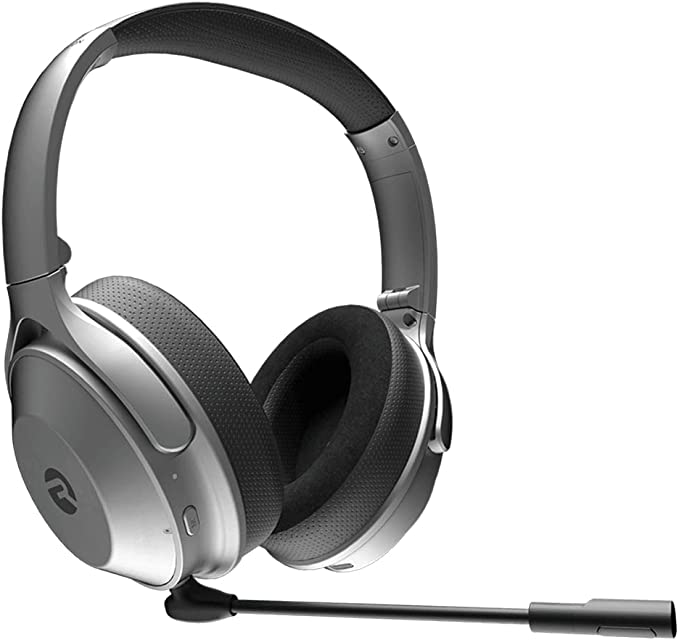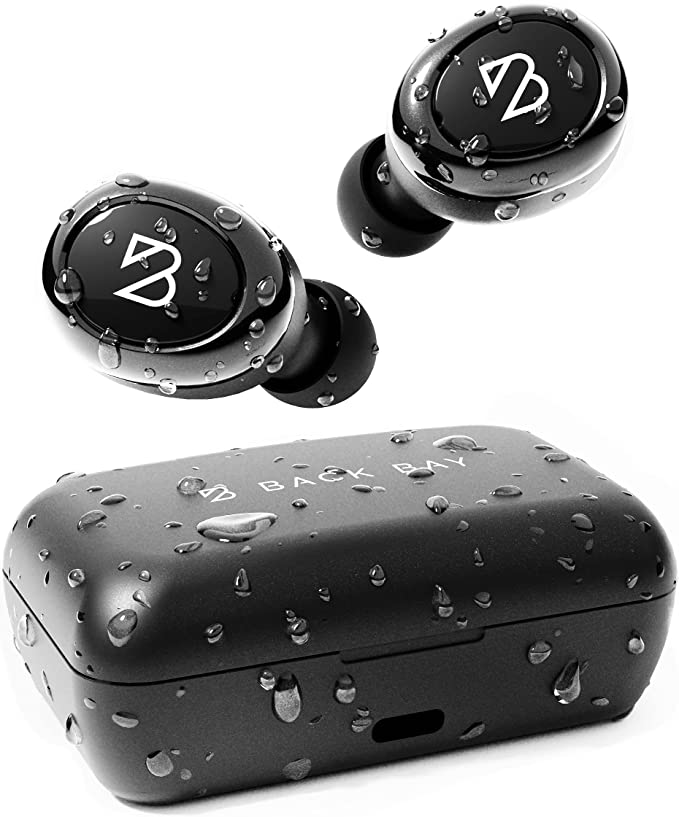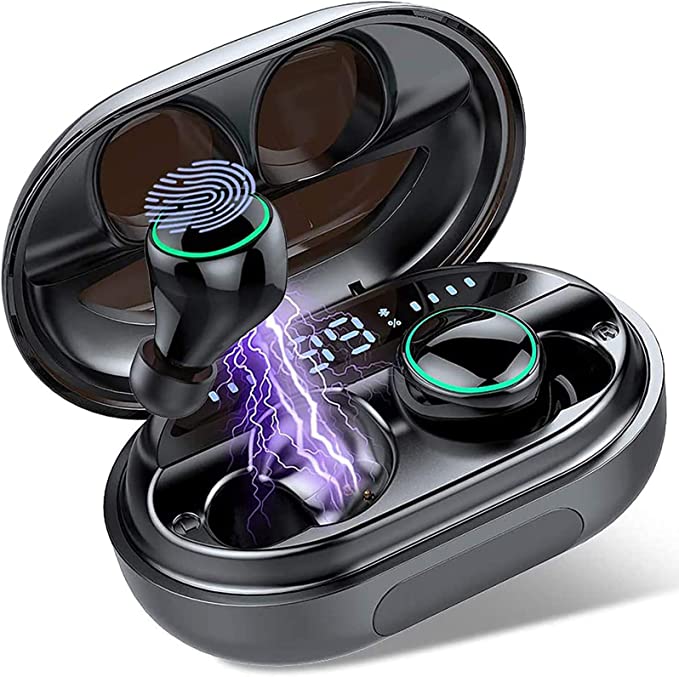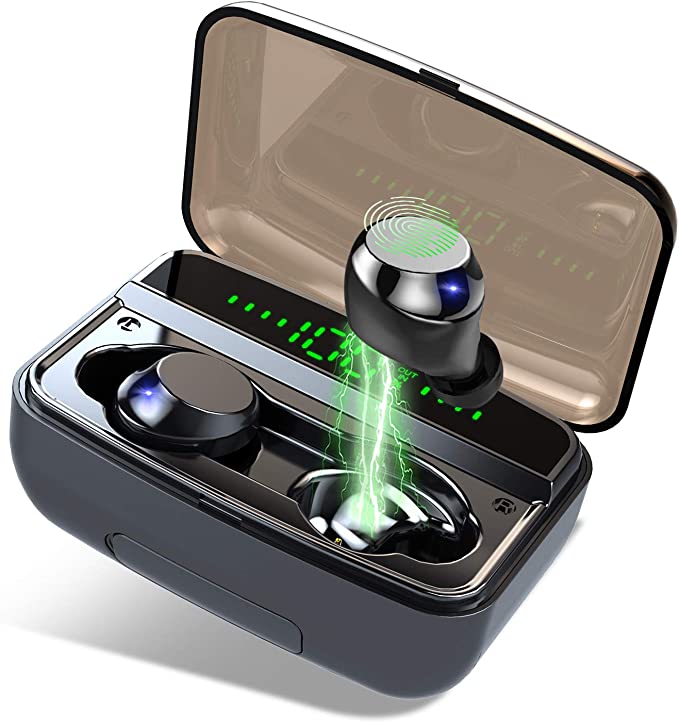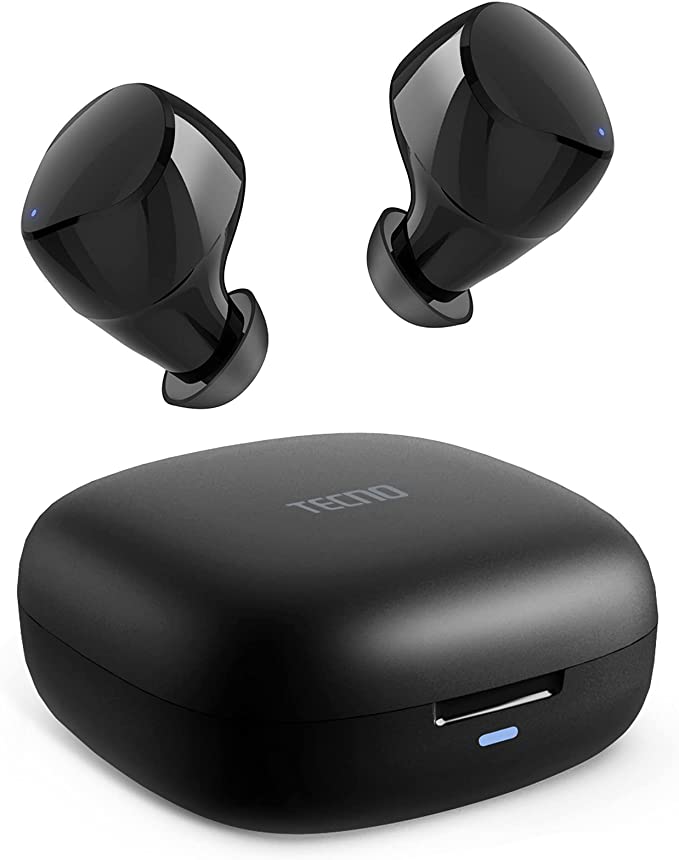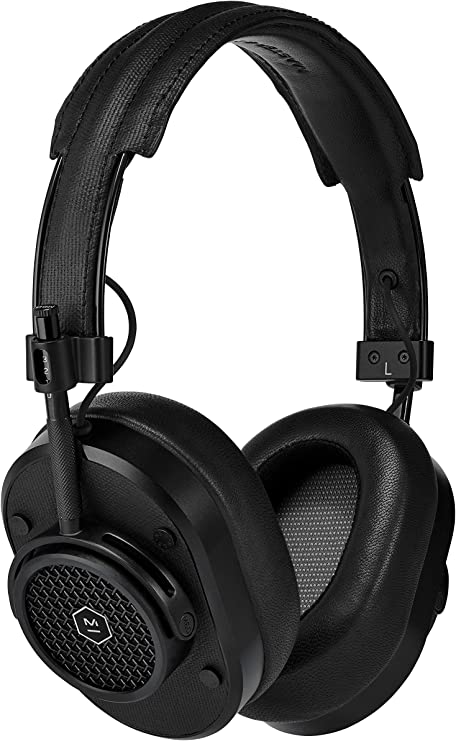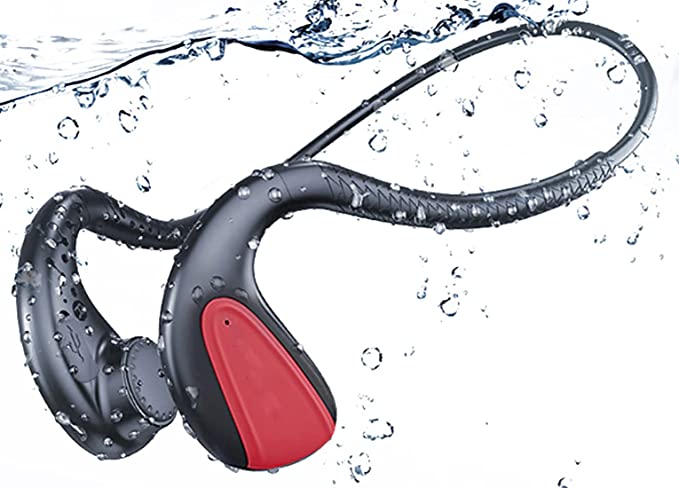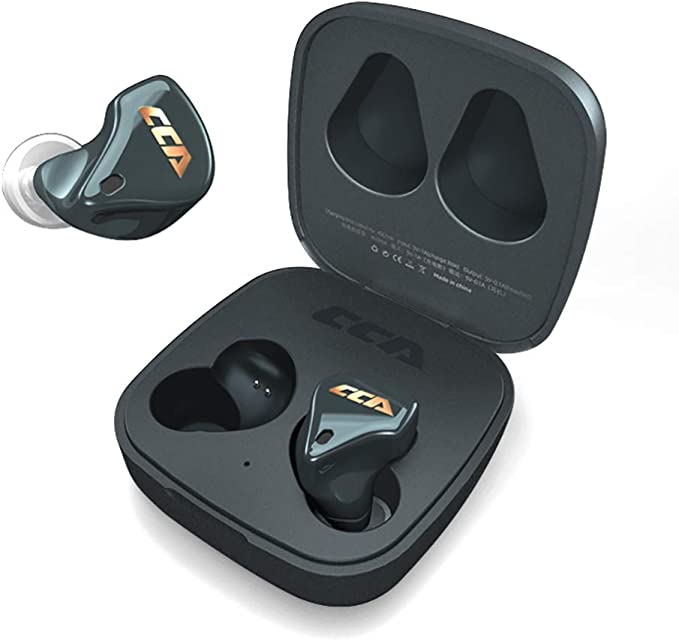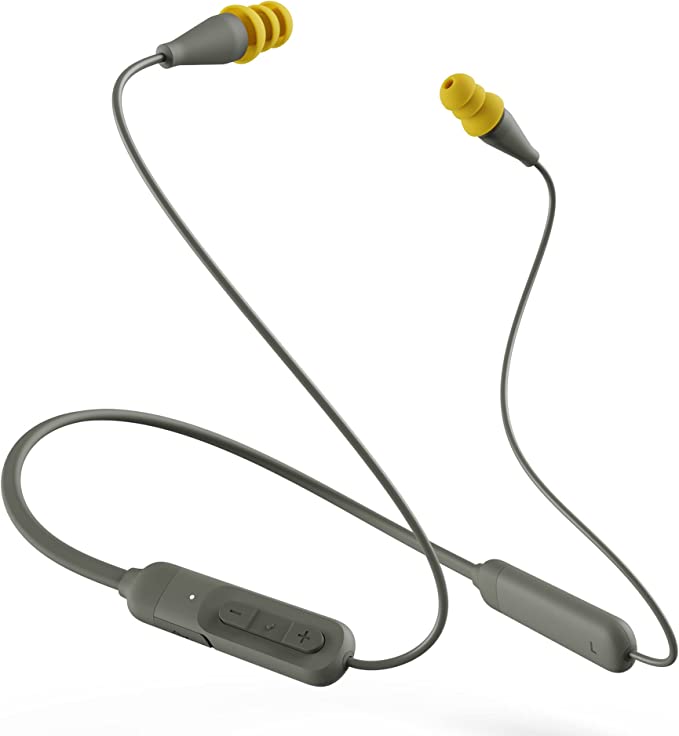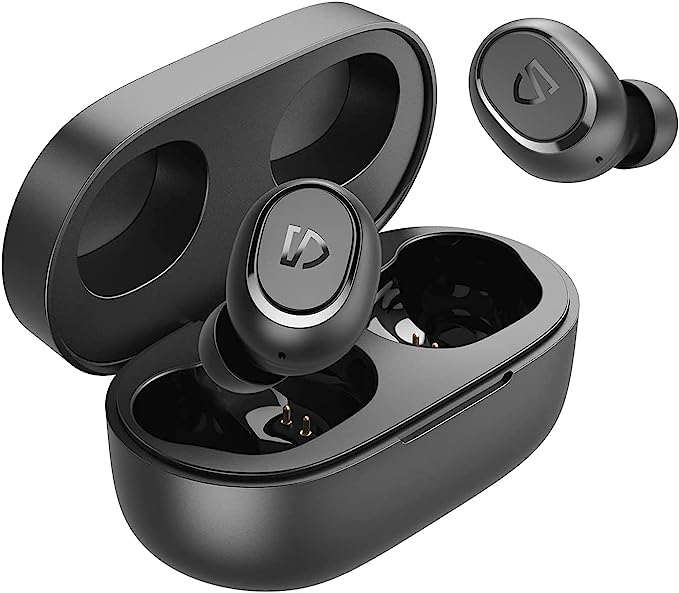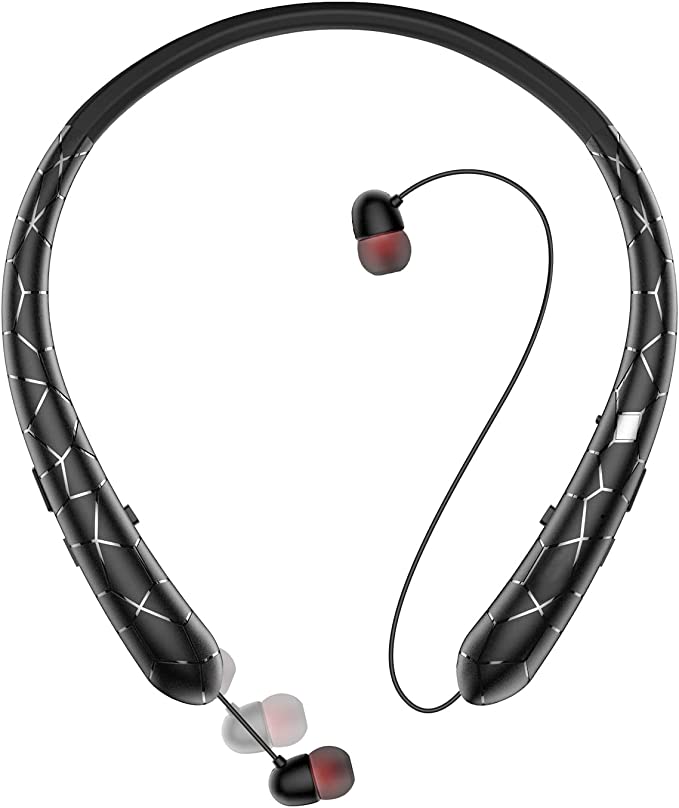Raycon RBH861-22E-BLA Gaming Headphones: The Science of Speed and Sound in Wireless Gaming
Update on May 14, 2025, 2:39 p.m.
(Disclaimer: As an audio engineer keen on exploring technology, I find dissecting product specifications a fascinating exercise. The following discussion of the Raycon RBH861-22E-BLA Gaming Wireless Headphones is based on the features listed in a publicly available product snippet: “45ms Ultra-Low Latency, 26 Hours of Battery, Bluetooth 5.0, Built in Retractable HD Mic,” along with its form factor and connectivity options. In the absence of detailed manufacturer technical sheets or white papers for this specific model, my aim here is to delve into the general scientific and engineering principles that typically underpin such features, offering you a richer understanding of what they mean for your gaming experience, rather than making definitive claims about this product’s specific internal architecture.)
Hello there. I’m often asked what truly elevates a gaming experience from merely good to utterly captivating. While stunning graphics and intuitive gameplay are undeniably crucial, there’s an invisible yet profoundly powerful force at play: sound. Think of it – the subtle rustle of leaves betraying an unseen foe, the thunderous roar of a dragon overhead, the crystal-clear instructions from your teammate that clinch a victory. This is the unseen symphony of gaming, and the quality of your audio gear is your conductor’s baton.
Today, we’re going to peel back the layers on a contemporary example, the Raycon RBH861-22E-BLA Gaming Wireless Headphones, using its highlighted features as a launchpad to explore the fascinating science that powers modern wireless gaming audio. It’s not just about numbers and labels; it’s about how these elements harmonise to create (or break) your immersion.

Bridging Worlds Without Wires: The Magic of Instantaneous Sound and Stable Connections
The dream of untethered gaming is an old one, but achieving it without compromising performance, especially in audio, has been a journey padrões of clever engineering. Two features listed for the Raycon headphones stand out here: an “45ms Ultra-Low Latency” and “Bluetooth 5.0.” Let’s see what these really entail.
The 45-Millisecond Enigma: Chasing Real-Time Audio in the Heat of Battle
Imagine you’re in a high-stakes virtual shootout. You see an opponent’s muzzle flash, but the sound of the shot arrives a fraction of a second later. In that tiny gap, you’re reacting to outdated information. That, in essence, is the curse of high audio latency. Latency is simply the delay between an event happening on screen and you hearing its corresponding sound. For gaming, especially competitive genres like first-person shooters (FPS), fighting games, or rhythm games, minimizing this delay is paramount.
Now, what about “45ms”? To put it in perspective, human beings can typically perceive audio-visual asynchrony if the sound lags the visuals by more than about 80 to 100 milliseconds (ms). Some sensitive individuals might even notice it sooner. So, a latency figure around 45ms, as cited for these headphones, aims to sit comfortably below that common perception threshold, striving for what feels like real-time audio.
How is such low latency generally achieved in wireless systems? It’s a multi-faceted challenge.
- Efficient Audio Codecs: Sound needs to be compressed to travel wirelessly (like zipping a large file). Standard Bluetooth codecs, like SBC (Subband Codec), prioritize stability over speed, sometimes introducing noticeable delays. To achieve lower latencies, specialized codecs are often employed. Technologies such as Qualcomm’s aptX™ Low Latency (though I’m not stating Raycon uses this, it’s a well-known example of such a solution in the industry) are engineered specifically to compress and decompress audio much faster, significantly reducing that end-to-end delay.
- Optimized Transmission Protocols: Beyond the codec, the entire wireless transmission chain, from the gaming device to the headphones’ chipset, needs to be streamlined. This involves sophisticated radio frequency (RF) management and efficient data packet handling to ensure audio data arrives swiftly and intact.
- System-Level Integration: The performance also depends on how well the headphone’s wireless module integrates with its audio processing components.
A 45ms latency doesn’t just mean sounds are “on time.” It means the crack of a sniper rifle feels instantaneous, the rhythm cues in a music game are perfectly aligned, and the dialogue in a story-driven RPG syncs flawlessly with lip movements, deepening your connection to the virtual world. It’s about maintaining the illusion of reality, which is so crucial for immersion.

Bluetooth 5.0: The Unsung Hero of Modern Wireless Freedom
The mention of “Bluetooth 5.0” might seem like just another version number, but it represents a significant leap in wireless capability compared to its predecessors (like Bluetooth 4.x). Think of it as upgrading from a winding country road to a multi-lane expressway for your audio data. Here’s why it matters for gaming headphones:
- Increased Speed and Bandwidth: Bluetooth 5.0 theoretically offers up to twice the data transfer speed of Bluetooth 4.2. For audio, this increased bandwidth is a boon. It means more data can be pushed through per second, which can support higher-fidelity audio streams and is crucial for consistently maintaining those low-latency connections we just discussed. More data throughput can also mean less aggressive compression is needed, potentially leading to richer, more detailed sound.
- Enhanced Range: Bluetooth 5.0 boasts up to four times the theoretical range of Bluetooth 4.2. Now, you’re unlikely to be wandering hundreds of feet from your console or PC during an intense gaming session. However, this improved range translates to a far more robust and stable connection even at shorter distances, especially in environments with potential interference (like a room métallisé with other wireless devices). Fewer dropouts, less stuttering – just a more reliable audio link.
- Better Connection Stability & Efficiency: The standard also brought improvements in how devices discover each other and manage connections, leading to quicker pairing and more stable links. Furthermore, while Bluetooth Low Energy (BLE) was introduced earlier, Bluetooth 5.0 further refined aspects of power consumption, which, as we’ll see next, is vital for untethered peripherals.
So, Bluetooth 5.0 isn’t just about cutting the cord; it’s about ensuring that the wireless experience is as seamless, reliable, and high-quality as a gamer demands.

Powering Epic Adventures: The Science of Uninterrupted Play
There’s little more frustrating than your gear dying mid-boss-fight or during a crucial team play. The “26 Hours of Battery” cited for the Raycon RBH861-22E-BLA speaks directly to this concern, promising the endurance needed for even the most dedicated gaming marathons.
Beyond the Clock: The True Meaning of 26-Hour Battery Life for the Dedicated Gamer
Twenty-six hours is a significant duration. It means you could potentially game for several long evenings, or an entire weekend LAN party, on a single charge. This kind of longevity liberates you from “battery anxiety” – that nagging worry about when you’ll next need to plug in – allowing you to fully immerse yourself in your virtual adventures.
What makes such extended playtime possible in a wireless device packed with technology?
- Modern Battery Chemistry: Most contemporary portable electronics, including headphones, rely on Lithium-ion (Li-ion) or Lithium-polymer (Li-Po) batteries. These chemistries offer excellent energy density, meaning they can store a lot of power in a relatively small and lightweight package. They also generally lack the “memory effect” of older battery types, making them more convenient to charge.
- Power-Efficient Components: The internal components of the headphones – from the wireless chipset (as mentioned, Bluetooth 5.0 has energy-saving characteristics) to the audio drivers and amplifiers – are designed with power consumption in mind. Engineers meticulously select and optimize these parts to sip, rather than gulp, energy.
- Smart Power Management: Modern devices often incorporate sophisticated power management algorithms. These can, for example, put parts of the circuitry into a low-power sleep state when not actively processing audio, or optimize wireless transmission strength based on the proximity to the source device.
It’s this combination of a capable energy source and intelligent, frugal consumption that allows for such impressive battery life figures, ensuring your headphones are ready whenever your gaming spirit calls.

Your Command, Crystal Clear: The Art and Science of the Retractable HD Microphone
In the collaborative world of online gaming, your voice is as critical as your reflexes. The Raycon headphones are listed with a “Built in Retractable HD Mic,” indicating a focus on both clear communication and user convenience.
Decoding “HD”: What Makes a Gaming Microphone Truly High Definition?
The term “HD” (High Definition) in the context of a microphone generally implies a capacity for capturing and transmitting voice with greater clarity and naturalness than a standard or lower-quality mic. This isn’t just marketing fluff; it usually points to specific acoustic performance characteristics:
- Wider Frequency Response: Human speech contains a range of frequencies. A microphone with a wider and flatter frequency response can capture more of these nuances – the lower tones that give voice its richness and the higher frequencies that contribute to clarity and sibilance (the ‘s’ and ‘sh’ sounds). This results in a voice that sounds less “tinny” or “muffled” and more true-to-life.
- Improved Signal-to-Noise Ratio (SNR): A good SNR means the microphone is more sensitive to your voice and less susceptible to picking up background hiss or electronic noise from its own circuitry. This leads to cleaner audio transmission.
- Directionality (Potentially): While not specified in the snippet, gaming microphones often employ unidirectional (or cardioid) pickup patterns. This means they are most sensitive to sound coming from directly in front of them (i.e., your mouth) and tend to reject sounds from the sides and rear. This is crucial for isolating your voice from keyboard clatter, other people talking in the room, or game audio bleeding from your earcups.
For a gamer, an “HD” mic means your teammates hear your callouts, strategies, and banter with precision, free from annoying distortion or excessive background noise. It fosters better teamwork and a more enjoyable social experience.
The Elegant Disappearance: The Ingenuity and Practicality of a Retractable Design
The “retractable” aspect of the microphone is a thoughtful piece of ergonomic design. When you’re playing a solo game or just listening to music, you might not need a microphone boom jutting out in front of your face. A retractable design allows you to:
- Protect the Microphone: When stowed away, the mic element is less prone to accidental bumps, drops, or snagging, enhancing its durability.
- Improve Comfort and Aesthetics: It simply looks neater and feels less obtrusive when the mic isn’t in use.
- Offer Versatility: You can quickly deploy it when needed for a chat, and just as easily make it disappear when you don’t.
Good retractable mechanisms are also engineered for smooth operation and longevity, ensuring they don’t become loose or faulty over time. It’s a small touch, but one that significantly enhances the usability and lifespan of the headset.
Crafted for Immersion and Endurance: The Over-Ear Advantage and a Nod to Versatility
Finally, the snippet tells us these are “Over Ear” headphones and offer “Wireless, Bluetooth, Wired” connectivity. These aspects round out the user experience.
Your Personal Sound Chamber: The Acoustic and Ergonomic Benefits of an Over-Ear Form Factor
The “Over Ear” design, also known as circumaural, means the earcups are large enough to completely enclose your ears. This offers several advantages:
- Passive Noise Isolation: By creating a seal around your ears, over-ear headphones naturally block out a good amount of ambient sound from your surroundings. This passive isolation helps you focus on the in-game audio, enhancing immersion without needing aggressive electronic noise cancellation (which can sometimes affect audio purity).
- Comfort for Extended Sessions: Because they distribute their clamping force over a larger area and don’t press directly onto the sensitive parts of the ear (the pinna), over-ear headphones are generally considered more comfortable for long gaming marathons, provided the earpad material is breathable and the clamping force is well-tuned.
- Acoustic Space for Drivers: The larger earcup volume can provide a more favorable acoustic environment for the drivers (the tiny speakers inside the headphones). This can allow engineers to tune for a more open, spacious soundstage – making positional audio cues in games feel more distinct and the overall soundscape more expansive.
The Trusty Tether: Why the Wired Option Still Holds Value
While wireless is the headline, the inclusion of a “Wired” connectivity option is a mark of practical design. There are times when going wired is preferable, or even necessary:
- Zero Latency: A direct analog connection via a cable inherently has negligible latency, which might be sought after by the most latency-sensitive competitive players or for certain audio production tasks.
- Battery-Free Operation: If your battery does eventually run down and you don’t have time to charge, you can often still use the headphones in wired mode (though some active features might be disabled).
- Universal Compatibility: A standard audio jack offers near-universal compatibility with a vast range of devices, some of which might not support Bluetooth or the specific wireless protocol the headphones use.
- Eliminating Wireless Interference: In environments with extreme RF interference, a wired connection provides an infallible audio path.
This versatility ensures the headphones remain a useful tool across a wider array of scenarios and user preferences.

Beyond the Spec Sheet: Harmonizing Technology for the Ultimate Gaming Soundscape
As we’ve journeyed through these features – from the near-imperceptible quickness of low-latency audio and the steadfastness of Bluetooth 5.0, to the endurance of a long-lasting battery, the clarity of an HD microphone, and the immersive comfort of an over-ear design – it becomes clear that creating a truly compelling gaming headset is an act of complex technological harmonization.
It’s not merely about one standout specification. It’s about how these individual pieces of engineering, each rooted in distinct scientific principles, work in concert to deliver an experience that draws you deeper into your virtual worlds, empowers your gameplay, and connects you seamlessly with your teammates.
Understanding the science and thought behind these features, I hope, allows you to appreciate not just the “what” but the “why” and “how” of the technology you use every day. The quest for the perfect gaming soundscape is an ongoing one, driven by clever engineering and a deep understanding of how we, as humans, interact with sound and technology. And that, to me, is an adventure in itself.

